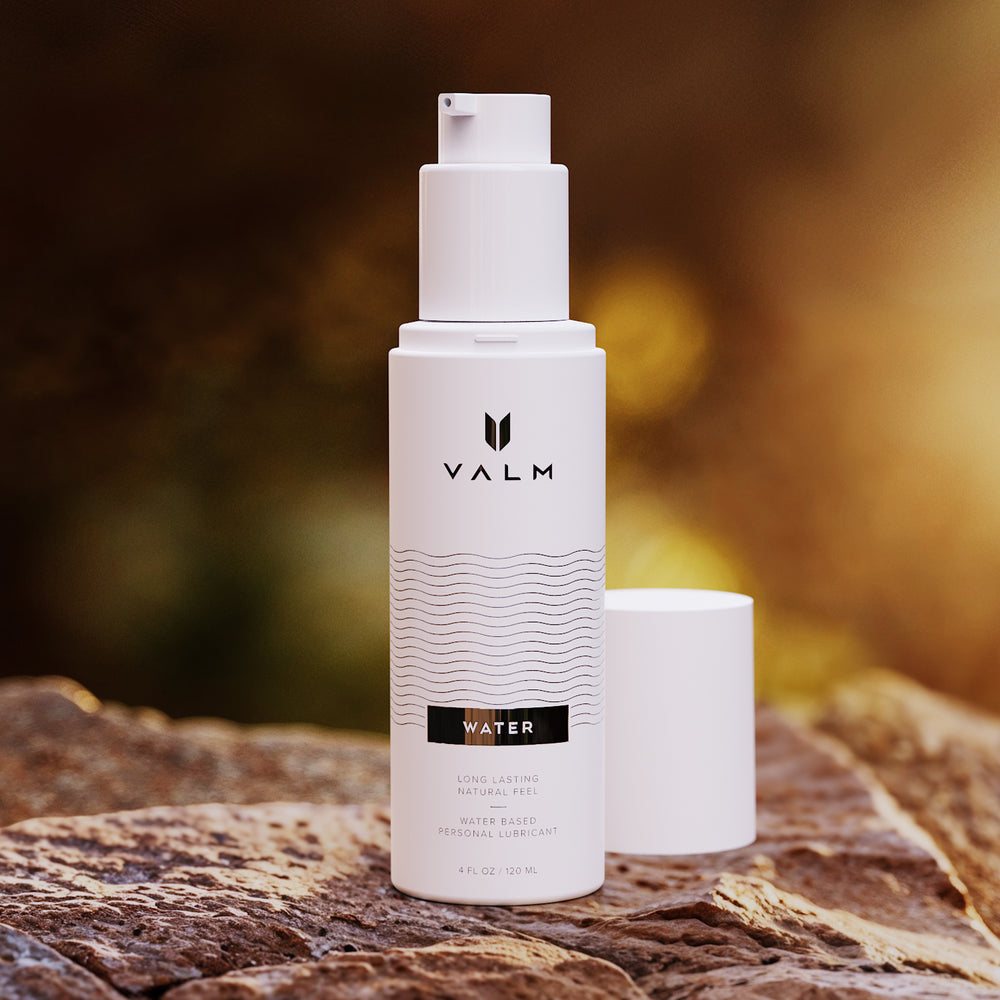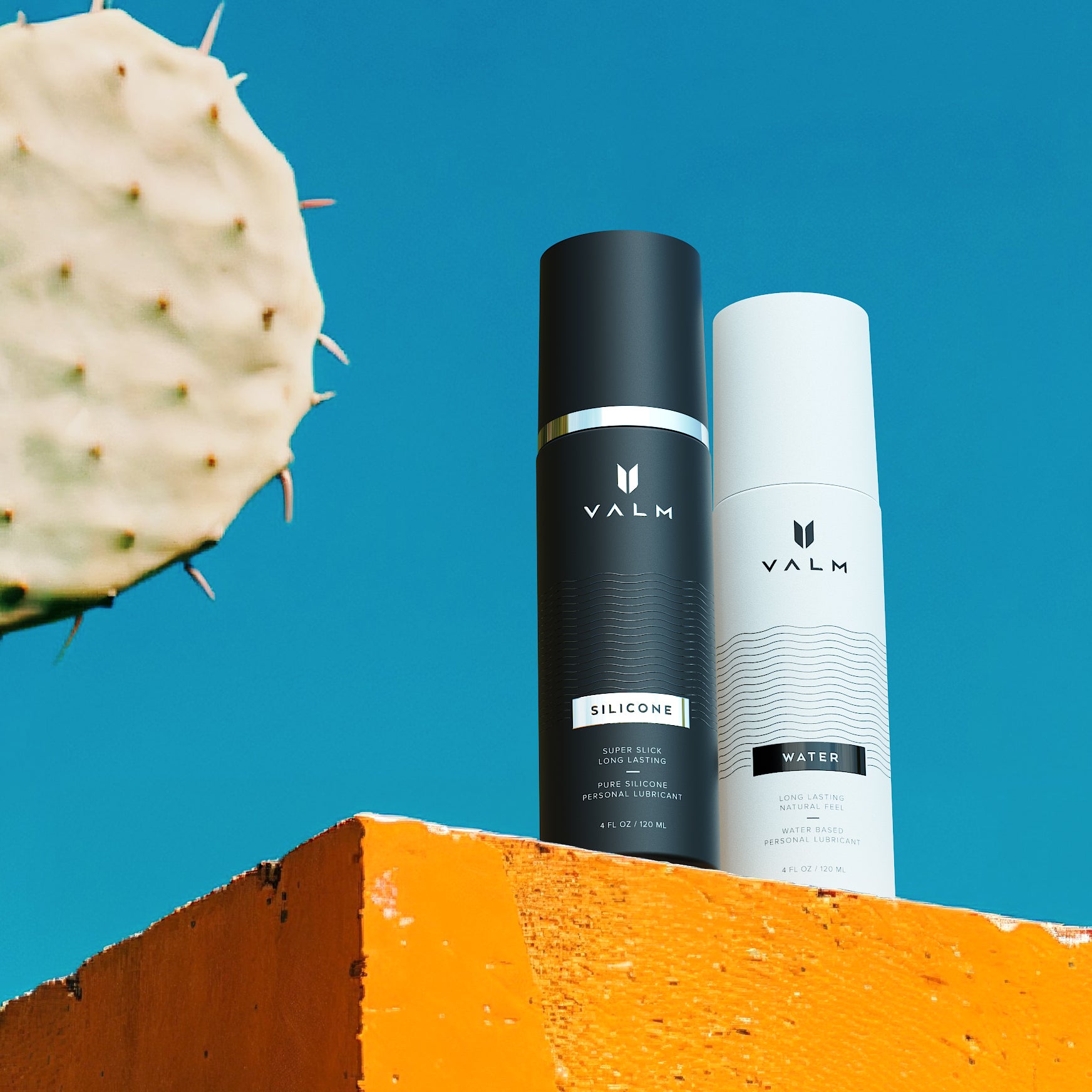Alright, let’s talk about lube and silicone toys. Maybe you’ve read multiple times that certain lubes can’t be used with certain toys, but no one has ever really explained why. If that’s the case, you’re in luck! This article is about to satisfy the most curious minds and finally spill the slippery truth. So, let’s talk about lube and silicone toys.
More and more people are owning sex toys, whether for solo play, spicing things up with a partner, or simply adding variety to their pleasure routine. One key essential element of a pleasant experience is making sure everything is properly lubricated. That means lube isn’t just a suggestion—it’s a necessity. And since a lot of sex toys are made of silicone due to its body-safe, durable, and non-porous nature, you need the right type of lubricant to keep them in top shape.
If you’ve invested in quality pleasure products, it’s important to treat them with the respect they deserve, not only for a better experience but also to ensure they last as long as possible—because some sex toys are an investment. That means choosing the right lubricant to keep them in good condition and ensuring a safe, comfortable experience.
Understanding Silicone as a Material
Silicone is a non-porous, body-safe material designed to last.
Scientifically speaking, silicone is a polymer composed of silicon, oxygen, and other elements, which gives it a unique combination of flexibility, durability, and resistance to bacteria.
Because of these properties, silicone is widely used in medical applications, including implants, prosthetics, and surgical tools. It is biocompatible, meaning it doesn’t react negatively with human tissues, making it a preferred material for long-term medical and intimate use.
However, using silicone-based lube on silicone toys can cause damage. The molecular structures bond and break down, leaving your toy with a sticky or gummy surface. Think of it like using the wrong cleaning product on delicate fabric—it can degrade the material and shorten its lifespan.
Or, if you want another visual, imagine slathering butter on a leather couch and then trying to sit down. Yeah, it’s a slippery situation with a very unfortunate ending.
Why Silicone Lube and Silicone Toys Don’t Mix
Let me tell you a real life story. One of my coaching clients came to me in a panic one day, holding up her once-beautiful silicone toy like it was a crime scene exhibit.
"Why does it feel weird?" she asked. I took one look and knew—something had gone horribly wrong.
I asked her what lube she had been using and how long she had owned the toy. "Oh, I use this fancy silicone lube," she said proudly. My heart sank. "How long have you been using it?" I asked. "A few months," she replied. That’s when I had to break the news: she had unknowingly committed toy sabotage. The once-smooth surface had turned into a sticky, rubbery nightmare.
I’ve seen this heartbreak too many times, and trust me, I learned the hard way myself. In my early exploration of sex toys, I thought, “Nah, this can’t be that big of a deal.” So, I grabbed one of those extra-soft silicone vibrators (you know, the ones that feel like a dream), ignored the whole "silicone lube is a bad idea" warning, and went on my merry way. A week later, I noticed my toy had started to break down like my willpower in a bakery.
Special Considerations for Silicone Dildos
Softer silicone dildos are particularly susceptible to damage from silicone-based lubes. These toys typically have a lower Shore hardness rating, meaning they are designed to be flexible and lifelike. While this makes them comfortable to use, it also means they can break down more quickly when exposed to the wrong lubricants.
Some ultra-soft silicone toys, particularly those with dual-density designs (squishy on the outside, firmer inside), are even more vulnerable. If you’re paying good money for a hyper-realistic feel, you don’t want to sabotage it with the wrong lube.
Why Water-Based Lubricants Are the Best Choice
I know, I know—water-based lube doesn’t sound as sexy as the super-slick, never-dries-out silicone lubes. But let me tell you, water-based lubes are the unsung heroes of bedroom fun.
Water-based lubes are composed mainly of water, along with thickening agents, humectants like glycerin or propylene glycol, and preservatives to maintain shelf stability.
Because they are water-soluble, they tend to be gentler on the body and easier to clean up.
This solubility is precisely why they are called 'water-based'—they dissolve in water and don’t leave behind stubborn residues like oil-based or silicone-based lubricants. Valm's Water-based lube delivers a clean, natural sensation with effortless glide, perfect for any play and easy to wash off.

Water-Based Lube
- Natural feel
- Long-lasting
- Neutral pH levels
- Body-safe ingredients
To keep your silicone toys in top condition, water-based lubricants are the safest and most effective option. Here’s why:
- No Chemical Reactions – Water-based lubes do not interact with silicone, keeping your toys intact.
- Easy Cleanup – They wash off easily with water, making post-use maintenance simple. No more scrubbing like you’re dealing with a crime scene.
- Safe for All Toys & Condoms – Water-based lubes are compatible with all toy materials, as well as latex and non-latex condoms.
What Else is Silicone Lube Good For?
So, why does silicone lube exist in the first place? Just because silicone lube is a no-go for your silicone toys doesn’t mean it’s useless.
In fact, silicone-based lube is a rockstar in plenty of other scenarios. Unlike water-based lube, it doesn’t dry out quickly, making it perfect for long-lasting lubrication.
It’s a lifesaver for activities like shower sex, since it’s waterproof and won’t wash away as soon as things heat up.
It’s also fantastic for anal play, where endurance and smooth glide are key.
Athletes and runners even use silicone lube to reduce chafing in high-friction areas, proving that it’s not just for bedroom adventures. Some people even use it as a skin moisturizer or hair serum because of its silky-smooth feel.
The key takeaway? Silicone lube is incredible—just not when it comes to your beloved silicone toys. Valm's Silicone lube offers a sleek, never-sticky finish, ensuring long-lasting smoothness without constant reapplication. For anal play, Valm's Silicone Anal Lube provides an ultra-silky texture that enhances comfort and endurance for a more enjoyable experience.
Silicone Lube
- 100% Silicone
- pH-Neutral
- Hypoallergenic
- Condom Compatible
How to Maintain Your Silicone Toys
Using the right lube is just one part of toy maintenance. If you want your toy to last longer than some of your past relationships, here are a few key steps:
1) Wash Before & After Use
Cleaning your toys is non-negotiable. Before and after every use, wash them thoroughly with mild soap and warm water to remove bacteria, bodily fluids, and any residue from lubricants. If your toy is waterproof, give it a gentle rinse under running water. For non-waterproof toys, use a damp cloth. To go the extra mile, consider using a specialized toy cleaner for an added layer of hygiene.
2) Store Properly
Where and how you store your toys matters. Keep them in a cool, dry place, preferably in a fabric pouch or dedicated storage box to prevent dust and lint from clinging to them. Avoid letting toys touch each other—certain materials, especially silicone, can degrade when in prolonged contact. If possible, store them separately in individual cases to keep them in prime condition for years.
3) Test New Lubes First
Not all lubricants are created equal, and some may not play well with your toys. Before committing to a new lube, do a small patch test on an inconspicuous part of your toy. Apply a tiny amount and let it sit for 24 hours. If there’s no change in texture, color, or integrity, the lube is likely safe for full use. This small step can save your favorite toy from premature damage.
4) Know When to Replace Your Toy
Sometimes, you have to let things go, even if you don’t want to. I once held onto a toy that had seen better days just because we’d been through so much together. But ignoring the warning signs isn’t wise when it comes to body-safe play. Signs of wear include:
- Sticky or tacky texture
- Surface warping or bubbling
- Unusual odors
- Loss of smoothness or discoloration
Lube Smart, Play Hard
If there’s one thing I’ve learned, it’s that high-quality lube and proper care will keep your silicone toys in excellent condition, ensuring a safe and enjoyable experience. Water-based lubricants are the best choice for compatibility, longevity, and ease of use. Treat your toys well, and they’ll treat you even better.
And for heaven’s sake—learn from my mistakes, not your own.


